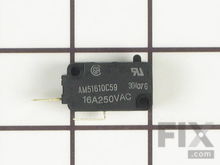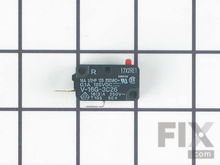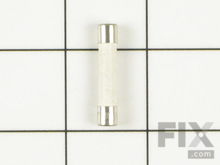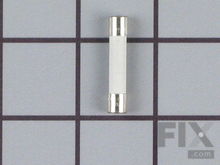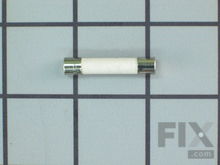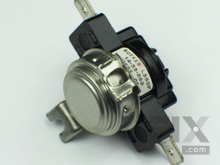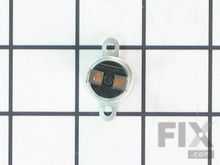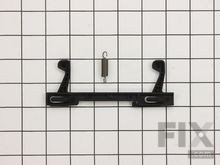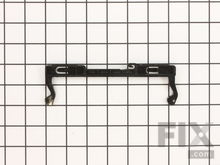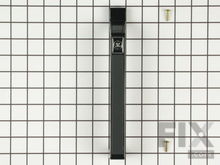How To Repair A Microwave That Doesn’t Turn On
- Rated as REALLY EASY
- 18 repair stories
- 4 step by step videos
Door Switch
If your microwave oven won’t start, you may have a problem with a door switch. The door switches, often referred to as primary or secondary interlock switches, provide power to the various components in the microwave when the door is in a closed position, and interrupt power when the door is open. Sometimes it is possible that when a door switch fails, the display and controls may appear normal, but the oven won’t operate. The interlock switches are located inside the cabinet and are activated by hooks or latches on the door. Unplug the unit and remove the cabinet. The interlock switches will have wires attached to the terminals that are marked common (C) and normally open (NO). You can check the switches for continuity using a multi-meter. With the actuator button depressed, you should see continuity between these terminals. If there is no continuity the switch will need to be replaced. You should also verify that the door hooks properly engage the switch actuator when the door is closed and adjust or replace it if necessary.
Ceramic Fuse
If your microwave oven won’t turn on and the display is blank, the problem may be the ceramic fuse. The ceramic fuse is used to protect the components of the microwave oven if you have a severe power fluctuation or if there is a critical fault with one of the internal components. When the fuse fails, power is interrupted to the controls of the microwave and it will become nonfunctional. The ceramic fuse is located inside of the cabinet near the entry point of the power cord. Remember to unplug the cord before attempting any repairs. You can check the fuse for continuity with a multi-meter. If the fuse failed for no apparent reason, check the major components such as the magnetron, high voltage diode, capacitor and transformer, and associated wire terminals, before changing the fuse. If the fuse failed when opening or closing the door, check for a shorted door switch, monitor switch, or improper adjustment of the door latch assembly. Use only the manufacturers’ suggested part number when replacing this fuse.
Thermal Fuse or Cut Out
If your microwave oven won’t turn on, you may have a problem with the thermal cut-out. Microwave ovens use one or more thermal cut-outs, sometimes called thermal fuses, to protect the oven from overheating. They are located inside of the cabinet, often near the oven cavity or the magnetron. If the thermal cut- out fails, power is interrupted to the controls or to the control outputs. Unplug the unit and remove the cabinet. Locate the thermal fuse or cut-out and remove the wires from the terminals. Check for continuity with a multi-meter and replace the part if no continuity is shown. Verify that the cooling fan is functional and that the air flow is not restricted.
Door Latch Assembly
If your microwave oven won’t turn on, you may have a problem with the door latch assembly. The door latch assembly usually consists of two hooks that protrude from the door and fit into the door switch holder that is mounted to the frame of the microwave. The hooks will contact the door switches to provide power to the controls and also, latch onto the holder to keep the door closed. The latch assembly is normally made of plastic and usually has a spring attached to provide downward tension to keep the hooks engaged. If either of the hooks is broken or does not have any spring tension, the switches may not be engaged. If this happens, the oven won’t turn on and you may need to replace the assembly. Unplug the unit and remove the inner door panel to access the door latch. The inner panel is normally attached by plastic tangs and caution should be used to remove it.
More Repair Parts
Still not sure which part is broken? We can offer you custom troubleshooting help if you search with your model number.






